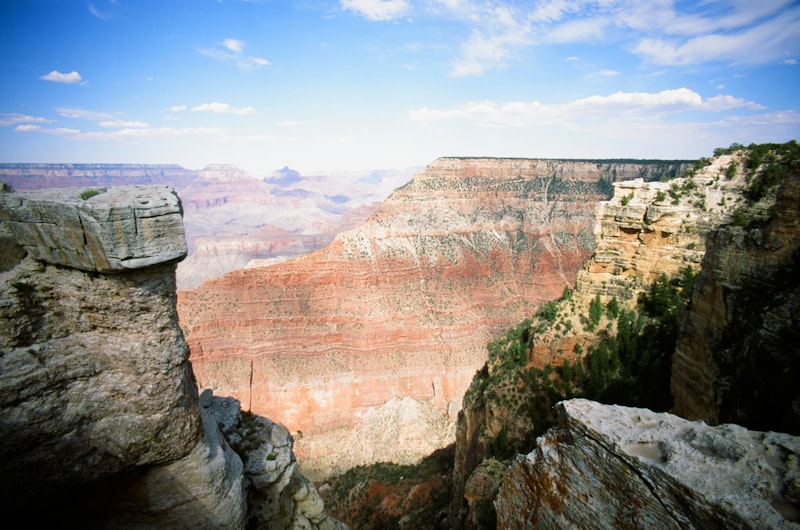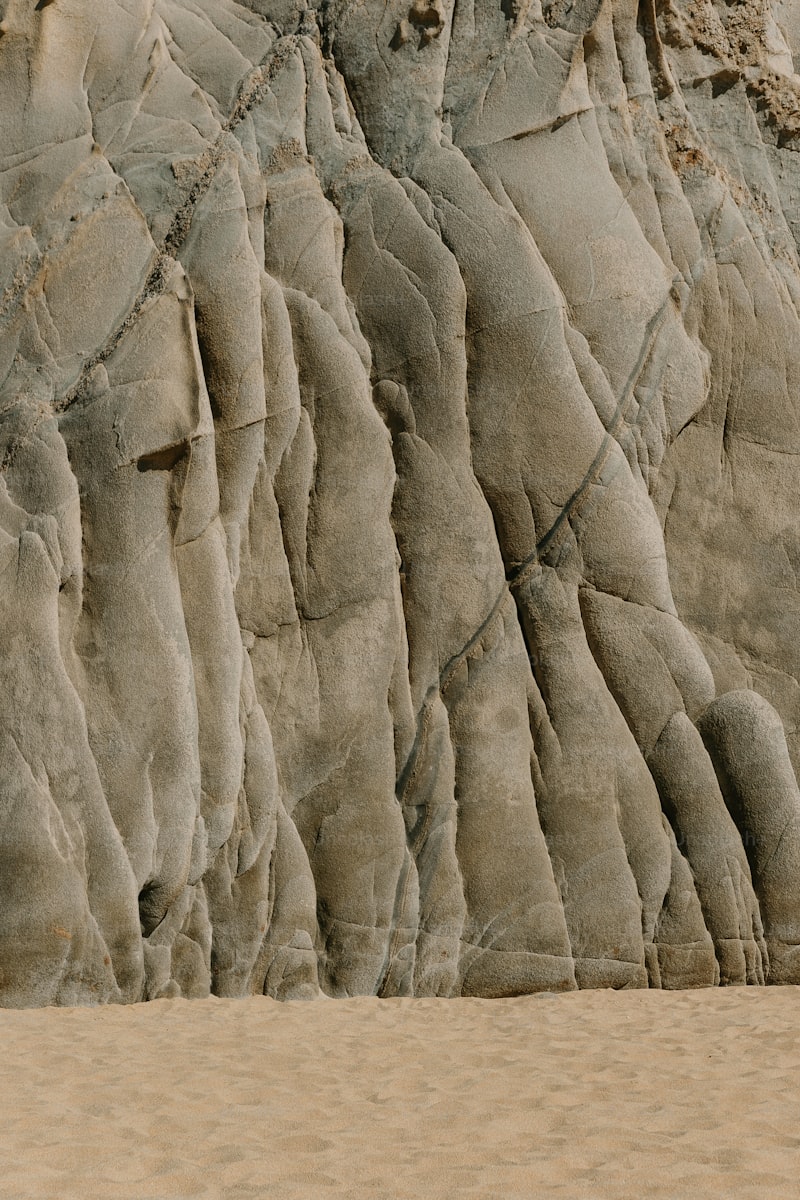Have you ever marveled at the sheer creativity of nature’s sculpting skills? From towering spires to delicate arches, rock formations around the globe stand as testaments to the Earth’s artistic prowess. These natural wonders not only captivate the eye but also tell stories of geological marvels and ancient landscapes.
One of the most iconic rock formations is the towering sandstone pillars of Monument Valley in Arizona, USA. Rising hundreds of feet into the air, these majestic structures have been shaped over millennia by wind and water, creating a surreal landscape that has been featured in countless films and photographs.
Moving across the globe to Turkey, we encounter the otherworldly landscape of Cappadocia. Here, soft volcanic rock has been eroded into fairy chimneys and cave dwellings that seem straight out of a fantasy novel. The unique shapes and formations of Cappadocia have not only drawn tourists but also inspired centuries of human habitation and cultural history.
In Australia, the Twelve Apostles stand as a testament to the relentless power of the Southern Ocean. These limestone stacks rise dramatically from the sea, each one a solitary sentinel against the crashing waves. Over time, erosion has sculpted these formations, creating a dramatic coastline that attracts visitors from all over the world.
Heading south to Brazil, the towering granite monoliths of Sugarloaf Mountain in Rio de Janeiro offer breathtaking views of the city and its coastline. These iconic peaks rise abruptly from the water’s edge, their smooth surfaces gleaming in the Brazilian sun, inviting climbers and sightseers alike to admire their natural beauty.
Whether you’re exploring the Grand Canyon’s intricate layers of rock or marveling at the delicate balancing act of Utah’s Arches National Park, each rock formation tells a story of geological history and natural beauty. These landmarks remind us of the Earth’s ability to create awe-inspiring sculptures that defy human imagination.
As you plan your next adventure, consider adding these unique rock formations to your travel bucket list. Each one promises not only breathtaking views but also a deeper appreciation for the forces that shape our planet.
Nature’s Sculptures: 10 Must-See Unique Rock Formations Across Continents
Nature’s artistry is on full display across the globe, carved into the very fabric of our planet. From towering spires to delicate arches, these natural rock formations captivate travelers and geologists alike with their stunning beauty and geological significance. Let’s embark on a journey to explore 10 of the most breathtaking rock formations found across different continents.
Located in the Coyote Buttes of Arizona, The Wave is a surreal sandstone formation renowned for its undulating patterns and vibrant hues. Its smooth curves and striations make it a photographer’s paradise and a testament to the erosive power of wind and water over millions of years.
Along the rugged coast of Northern Ireland lies the Giant’s Causeway, an otherworldly landscape of interlocking basalt columns. Formed by volcanic activity over 60 million years ago, these hexagonal pillars create a mosaic-like pathway leading into the sea, steeped in myth and legend.
Standing sentinel off the coast of Victoria, Australia, The Twelve Apostles are limestone stacks rising majestically from the Southern Ocean. Erosion continues to shape these monoliths, once part of the mainland cliffs, into their current dramatic forms.
Jutting out 700 meters above Lake Ringedalsvatnet, Trolltunga (Troll’s Tongue) offers a breathtaking perch above the Norwegian wilderness. This slender rock formation is a testament to the power of glacial erosion, providing brave hikers with panoramic views of fjords and valleys below.
Situated in Quebec’s Gaspé Peninsula, Perce Rock is a colossal limestone monolith rising from the Gulf of Saint Lawrence. Its arched opening, carved by relentless waves, frames a nesting ground for seabirds and serves as a natural wonder against the Atlantic backdrop.
In the heart of Nambung National Park, the Pinnacles stand as a surreal landscape of limestone spires rising from yellow sands. These ancient formations, some reaching several meters in height, evoke a sense of otherworldliness amidst the Australian outback.
Scattered across Yorkshire’s Nidderdale Area of Outstanding Natural Beauty, Brimham Rocks are a collection of balancing rock formations shaped by millennia of wind, rain, and ice. These whimsical shapes include the Dancing Bear and the Idol, inviting exploration and wonder.
Dominating the skyline of Cape Town, Table Mountain is a flat-topped sandstone formation steeped in cultural and ecological significance. Its distinctive shape, formed over 300 million years, provides sweeping views of the city and the surrounding Atlantic Ocean.
A UNESCO World Heritage site, Ha Long Bay is dotted with thousands of limestone karsts and islets rising dramatically from emerald waters. These towering formations, shaped by ancient seas and tides, create a mystical seascape that has inspired legends and poets for centuries.
Sacred to the Aboriginal people of Australia, Ayers Rock, or Uluru, is a massive sandstone monolith rising from the flat plains of the Northern Territory. Its rust-red hue transforms with the shifting light of dawn and dusk, embodying spiritual significance and natural beauty.
These natural wonders remind us of the Earth’s transformative power and the awe-inspiring beauty that awaits those who venture off the beaten path. Each rock formation tells a story of geological processes, cultural significance, and the enduring wonder of our natural world.
From Iceland to Australia: Exploring Earth’s Most Breathtaking Rock Formations

In Iceland, the Reynisdrangar basalt sea stacks rise dramatically from the Atlantic Ocean near the black sand beaches of Reynisfjara. These towering columns, formed by cooling lava, stand as silent sentinels against the crashing waves, their hexagonal shapes mesmerizing visitors from around the world.
Moving south to Australia, the Twelve Apostles along the Great Ocean Road in Victoria present a stunning coastal panorama. Despite the name, only eight limestone stacks remain standing against the erosive forces of wind and sea. These majestic formations change color throughout the day, from brilliant orange at sunrise to deep blue under moonlight.
In the United States, Monument Valley on the Arizona-Utah border showcases towering sandstone buttes that seem to defy gravity. Carved by wind and water over millennia, these iconic formations have been featured in countless films, embodying the rugged beauty of the American Southwest.
Traveling to China, the Zhangjiajie National Forest Park is home to the towering sandstone pillars that inspired the floating Hallelujah Mountains in the movie Avatar. These vertical columns, covered in lush greenery, create an otherworldly landscape that seems straight out of a fantasy.
Closer to home, the Giants Causeway in Northern Ireland is a UNESCO World Heritage Site famous for its polygonal basalt columns. Legend has it that the causeway was built by the giant Finn McCool as a path to Scotland. Regardless of its origin, the symmetry and precision of these formations are a testament to nature’s artistry.
From the icy landscapes of Iceland to the sun-drenched shores of Australia, these rock formations stand as silent witnesses to the Earth’s ever-changing beauty. Each one invites us to ponder the mysteries of geology and marvel at the wonders that nature has sculpted over millennia.
Hidden Wonders: Discovering Remote and Unique Rock Formations
Have you ever imagined stumbling upon nature’s hidden sculptures, crafted over millennia in remote corners of the world? These are not just rocks; they are awe-inspiring formations that defy imagination and leave visitors spellbound. From towering spires to whimsical shapes carved by wind and water, the Earth boasts an array of geological marvels waiting to be explored.
Imagine standing before the Wave in Arizona, its undulating swirls of red and orange Navajo sandstone resembling a frozen tidal wave. This remote treasure tucked within the Vermilion Cliffs National Monument feels like stepping into a surreal painting. Every curve tells a story of ancient landscapes shaped by geological forces beyond our comprehension.
Venture into Turkey’s Cappadocia region, where fairy chimneys punctuate the skyline like remnants of a forgotten civilization. These whimsical rock pillars, sculpted by volcanic eruptions and eroding winds, have housed communities for centuries. Walking through Göreme National Park, you can’t help but marvel at how nature and human ingenuity have coalesced over time.
In Australia’s Northern Territory lies Kata Tjuta, an Aboriginal sacred site where massive domed rock formations rise from the desert floor. Known as the Olgas, these ancient monoliths create a spiritual atmosphere, especially during sunrise and sunset when their colors shift dramatically against the vast outback sky.
Further north in Iceland, the basalt columns of Reynisfjara Beach stand as testament to the raw power of volcanic activity. These perfectly hexagonal pillars, formed as lava rapidly cooled, evoke a sense of wonder akin to walking among giants’ stepping stones.
Traveling to Zhangjiajie, China, transports you to a landscape straight out of a fantasy novel. The towering sandstone pillars, shrouded in mist and adorned with lush greenery, inspired the floating Hallelujah Mountains in James Cameron’s “Avatar.” It’s a place where reality blurs with myth, inviting visitors to explore its otherworldly beauty.
These remote and unique rock formations remind us of nature’s ability to surprise, inspire, and humble. Each one tells a tale of geological processes, cultural significance, and the enduring beauty of our planet. Whether you seek adventure or quiet reflection, these hidden wonders promise an unforgettable journey into the heart of Earth’s natural marvels.
Unveiling Geological Marvels: The World’s Most Surreal Rock Formations
Imagine standing before colossal sculptures crafted by nature itself — rocks that defy imagination and stretch the limits of geological possibility. These geological marvels, known as rock formations, are scattered across the globe, each telling a unique story of Earth’s ancient past and its ever-evolving present. From towering spires to delicate arches, these formations captivate the human imagination with their surreal shapes and breathtaking beauty.
One such wonder is the Wave in Arizona, USA, a hypnotic sandstone formation that appears as if painted by an artist’s brush. Its undulating patterns and vibrant hues draw visitors from around the world, offering a glimpse into the artistic prowess of geological forces over millions of years.
Moving across continents to Turkey, the Cappadocia region unveils the fairy chimneys — tall, cone-shaped rock formations that populate the landscape like ancient sentinels. Carved by wind and water erosion over millennia, these formations served as homes and hideouts for early Christians, blending human history with natural wonder in a seamless tableau.
Venturing underwater reveals the otherworldly beauty of the Great Blue Hole in Belize, a massive marine sinkhole encircled by a vibrant coral reef. Its perfectly circular shape and deep azure hue beckon divers to explore its mysterious depths, where stalactites and stalagmites create an underwater spectacle unlike any other on Earth.
Closer to home, the Giants Causeway in Northern Ireland stands as a testament to volcanic activity’s creative force. Hexagonal basalt columns interlock like a giant’s pathway, offering a glimpse into the Earth’s fiery origins and geological processes that shaped our landscapes.
Beyond Grand Canyon: Lesser-Known Spectacular Rock Formations Worth Visiting
When you think of awe-inspiring rock formations, the Grand Canyon likely comes to mind first. However, the world is dotted with lesser-known geological wonders that rival its grandeur. These hidden gems offer a unique glimpse into the Earth’s geological history and are well worth adding to your travel bucket list.
Imagine standing amidst towering pillars of rock that seem to defy gravity. One such marvel is the Zhangjiajie National Forest Park in China, famous for its quartz sandstone pillars that inspired the floating Hallelujah Mountains in the movie Avatar. The views here are not just picturesque but downright surreal, making you question if you’ve stepped into a painting.
For those fascinated by natural bridges and arches, Utah’s Arches National Park presents a breathtaking spectacle. Over 2,000 stone arches have been sculpted by nature’s hand over millennia, creating a labyrinth of red-rock wonders that change hues with the shifting sunlight. It’s like walking through a natural gallery where each arch tells a story of wind, water, and time.
If you crave an otherworldly experience, look no further than Cappadocia in Turkey. This region is famous for its “fairy chimneys” – tall, cone-shaped rock formations clustered in valleys. These unique structures, once homes to ancient civilizations, now offer hot-air balloon enthusiasts a dreamlike backdrop for their rides across the sky.

Closer to home, Australia’s Bungle Bungle Range in the Kimberley region is a testament to the power of erosion. The orange-and-black striped beehive-shaped domes rise dramatically from the landscape, creating a mesmerizing contrast against the blue Australian sky.
These lesser-known rock formations remind us of the Earth’s boundless creativity. They are not just geological oddities but destinations that stir the soul and ignite a sense of wonder. So, if you’re ready to go beyond the familiar, pack your sense of adventure and explore these spectacular natural wonders waiting to be discovered.
Rock of Ages: Unearthing the Ancient Stories Behind Global Rock Formations
Take the Grand Canyon, for instance. Carved over millions of years by the mighty Colorado River, this colossal chasm in Arizona is a testament to the power of erosion. As you gaze upon its vastness, you can almost feel the whispers of time echoing through its layered rock walls. Native American tribes have long revered the canyon as a sacred site, weaving tales of creation and spirits into its deep crevices.
In Northern Ireland, the Giant’s Causeway presents a different kind of wonder. Its hexagonal basalt columns, formed by ancient volcanic activity, appear almost too perfect to be natural. Legend has it that the Causeway was built by the Irish giant Fionn mac Cumhaill as a pathway to Scotland. The reality of geological processes may not match the myth, but standing amidst these columns, you can’t help but marvel at the blend of nature’s artistry and human storytelling.
Travel to Australia’s Uluru, formerly known as Ayers Rock, and you encounter not just a striking monolith rising from the flat desert but a deeply sacred site for the indigenous Anangu people. This massive sandstone rock formation is not merely a physical landmark but a spiritual centerpiece, adorned with ancient rock art and rich in cultural significance.
From the towering spires of Bryce Canyon to the surreal landscapes of Cappadocia, each rock formation tells a unique story shaped by geological forces, cultural beliefs, and the passage of time. They are reminders of Earth’s ancient history and enduring beauty, inviting us to ponder our place in the grand tapestry of the universe.
Journey Through Time: Ancient Mysteries of Earth’s Unique Rock Formations
Have you ever wondered about the secrets hidden within Earth’s ancient rock formations? These majestic structures, shaped over millions of years, hold tales of our planet’s turbulent past and the forces that shaped it. From the towering cliffs of the Grand Canyon to the surreal shapes of the Giant’s Causeway, each formation whispers stories of ancient times.
Take the Giant’s Causeway in Northern Ireland, for instance. Imagine thousands of hexagonal basalt columns rising like steps from the sea. How did these unique shapes come to be? It’s a mystery that sparks curiosity and awe. Scientists tell us these columns were formed by volcanic activity millions of years ago, where molten lava cooled rapidly upon contact with the water, creating these incredible formations.

Or consider the eerie hoodoos of Bryce Canyon National Park in Utah, USA. These spire-like rock formations, carved by the relentless forces of wind and water over eons, resemble a stone forest frozen in time. Walking among them, you can’t help but wonder about the ancient climates and landscapes that once dominated this region.
Each of these natural wonders offers a glimpse into Earth’s geological history. They are reminders of the ever-changing nature of our planet and the powerful forces that continue to shape it today. From the delicate arches of Arches National Park to the rugged beauty of the Sahara’s rock formations, each site tells a unique story waiting to be discovered.
Frequently Asked Questions
What are some famous natural rock formations worldwide?
Discover renowned natural rock formations around the globe with our concise guide. From the majestic Grand Canyon in the USA to the stunning Giant’s Causeway in Northern Ireland, explore these geological wonders that awe and inspire.
Where can I find natural arches and bridges made of rock?
Discover where to find natural arches and rock bridges across the globe. Learn about stunning locations formed by geological processes over millennia, offering breathtaking natural beauty for exploration and photography.
How do weathering and erosion create unique rock shapes?
Learn how weathering and erosion sculpt distinct rock formations over time, shaping unique geological features through natural processes.
How are rock formations like the Giant’s Causeway formed?
Discover how rock formations like the Giant’s Causeway are formed through volcanic activity and subsequent erosion over millions of years. This natural phenomenon results from lava cooling and fracturing into polygonal columns, creating the unique landscape known for its geometric patterns.
What are hoodoos and where can they be seen?
Discover the fascinating formations known as hoodoos and where to find them. Hoodoos are tall, thin spires of rock that protrude from the bottom of arid basins and badlands. They are commonly found in areas with a combination of hard and soft rock layers that erode at different rates. Famous locations to see hoodoos include Bryce Canyon National Park in Utah, USA, where they form a spectacular and otherworldly landscape.



